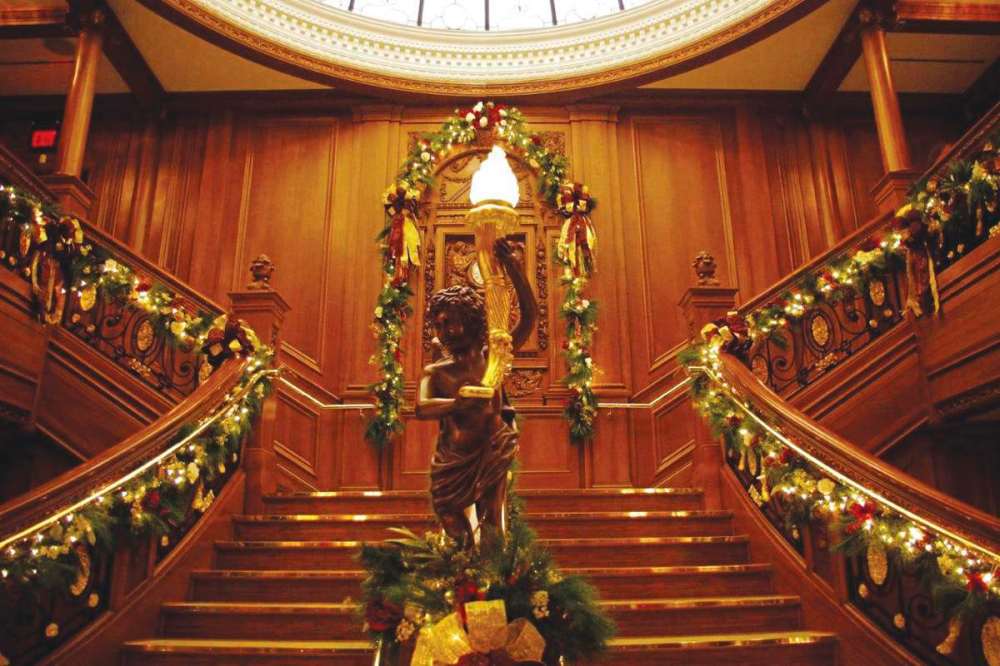Branson’s Titanic museum worth the trip
Advertisement
Hey there, time traveller!
This article was published 08/04/2019 (2418 days ago), so information in it may no longer be current.
It’s been 107 years since the sinking of the ‘unsinkable’ Titanic, and many remain captivated by the stories — myself included. As a teenager who loved to read, one of my favourite books was A Night to Remember.

When Titanic’s wreckage was located in 1985, there was renewed interest in discovering exactly what happened on April 14, 1912, when the ship struck an iceberg during its maiden voyage from Southampton to New York City. The 1997 Hollywood blockbuster movie, Titanic, brought the event to life in a way we had never seen. I was hooked. And still am.
Obviously others are, too, with museums around the world dedicated to depicting this disaster. While Branson, Mo., may best be known for music and theatres, the Titanic Museum is what stole the show for me. Billed as the ‘world’s largest Titanic museum attraction’, the building itself is a replica of the bow of the actual ship, built to half-scale. Even though it’s smaller than the original, it still felt massive. Upon embarking, it’s like walking back in time. Each guest is given a boarding pass with information about a real-life person whose destiny became forever intertwined with that of the Titanic.
During the self-guided tour, you discover what would have happened to you — a first-hand experience that drives home the enormity of a tragedy that touched the world, and the 2,028 names that line the memorial room’s wall. Titanic museum features more than 20 galleries of over 400 personal and private artifacts, and replicates cabins, hallways, and other common areas.
The grand staircase, made famous by scenes from the movie, was constructed from the ship’s original plans, with oak panelling, elaborate hand-railings and ironwork, darling cherub statue, and magnificent glass dome. The accompanying clock is framed by intricate elegant carvings, and is set to what would have been the final time it ever saw the surface.
Interactive displays allow you to feel some of the conditions passengers would have experienced. For example, when the ship began to tilt, the deck would have sloped. Three floor models set to varying inclines — 12, 30 and 45 degrees — allow you to walk the same slope, which becomes increasingly more difficult, demonstrating the physical struggle it would have been to stay on-deck.
One of the biggest Titanic tragedies was the fact lifeboats could have held more than they did. To give the feel of what this would have been like, you can sit in a full-sized lifeboat inside a darkened gallery with stars overhead.
Those who didn’t make it into the small safety vessels would have gone right into the -2C ocean. Reaching your hand into water set at this temperature is eye-opening. Seeing how long you can keep it there is alarming. I certainly couldn’t keep it there very long, nor could I imagine the horrors of that night.
But for a moment, I could feel connected to the stories like never before, and grateful I wasn’t there. And still am.
RoseAnna Schick is an avid traveller who seeks inspiration wherever she goes. Email her at rascreative@yahoo.ca

RoseAnna Schick
Travelations
RoseAnna Schick is an avid traveller and music lover who seeks inspiration wherever she goes. Email her at rasinspired@gmail.com
Our newsroom depends on a growing audience of readers to power our journalism. If you are not a paid reader, please consider becoming a subscriber.
Our newsroom depends on its audience of readers to power our journalism. Thank you for your support.




